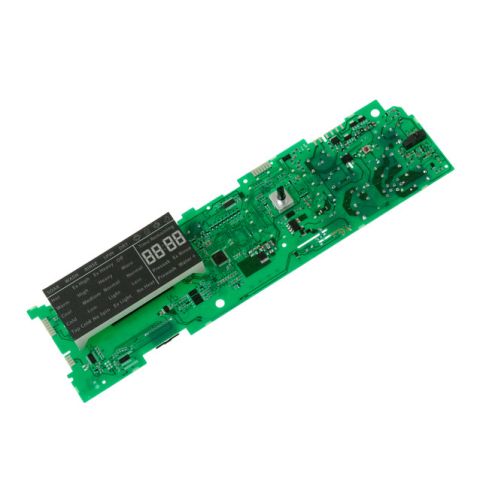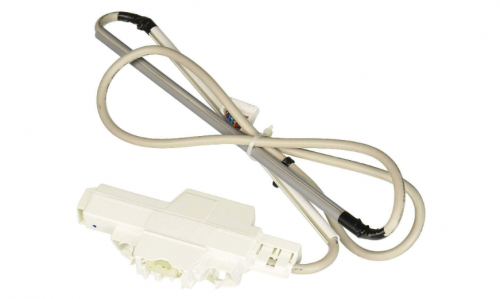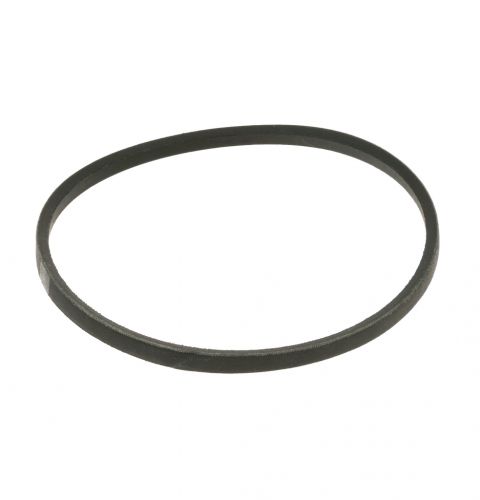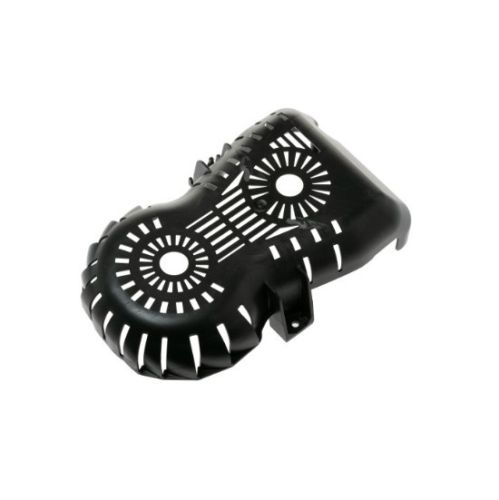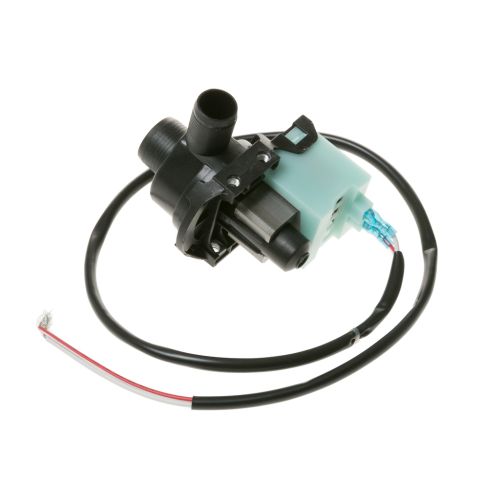
How to Drain a Washing Machine Fast & Easy
Draining your washing machine is a crucial step in its maintenance and proper functioning. While it might seem like a routine task, it holds significant importance for several reasons like, preventing mold and mildew, avoiding odor issues, preventing blockages, maintaining efficiency, ensuring clean laundry, and preventing leaks. Recognizing when your washing machine needs draining is essential for its proper maintenance and to prevent potential issues such as stagnant water, foul odors, slow draining, excessive vibration, detergent residue inside of the machine, unusual noises, and reduced efficiency. In this blog, we are going to deal with all sorts of possible problems caused by the non-draining of water after each cycle of washing clothes in your machine.
Possible causes for washing machine not draining
A washing machine not draining properly can be frustrating, but several potential causes could be behind this issue. Here are some common reasons why your washing machine might not be draining:
-
Clogged Drain Pump or Filter: Over time, lint, debris, and small objects like coins or buttons can accumulate in the drain pump or filter. This blockage prevents water from being pumped out. Regular inspection of the pump and filter can prevent this issue.
-
Kinked or Blocked Drain Hose: The washing machine drain hose that carries water out, is either kinked or twisted it may cause hindrance in causing the water to flow out of the hose properly.
-
Drain Hose Position: The position of the drain hose needs to be installed in the correct position, where it can effectively pump out the water after each wash cycle.
-
Faulty Drain Pump: The drain pump plays the role of disposing of the water from the machine as soon as the cycle ends. If it leads to a malfunction it could lead to potential blockage of water inside of the machine.
-
Clogged Drain Line: In some cases, the drain line that is connected to the house's plumbing line can be clogged with lint or debris from the clothes which could lead to non-draining of water from the machine.
-
Pump Impeller Damage: The pump which is inside of the machine is faulty might also be the reason why the water isn't drained out effectively.
-
Air Gap (For Top-Load Machines): Top-load washing machines might develop an air gap in the drain pump line. If it is clogged it can prevent safe disposal of water off the machine.
-
External objects in the drum: In a few cases, objects such as socks or undergarments could land in the drain outlet hose, hence obstructing water flow from the machine.
If your washing machine isn’t draining properly, it's important to identify and address the problem.
How to drain front load washer
Draining a front-load washing machine is a relatively simple process that can help address issues like excess water accumulation and drainage problems.
Note: Ensure the washing machine is unplugged or disconnected from the power source to prevent any electrical accidents.
-
Come prepared with tools: Get a catch tray to collect the clogged water, and a sponge or any water-absorbing material to clean up the spills.
-
Locate the drain pump filter of the machine: It’s normally located on the front side of the machine near the bottom behind the access panel.
-
Place the catch container: Place the tray directly under the pump to avoid water spills on the floor.
-
Unlock the access panel: Carefully open the access panel that is placed on the drain pump by unscrewing the screws on the covering.
-
Release Water from the Pump: Inside the machine pull out the drain pump filter, let out the clogged water inside the machine, and collect it in the container.
-
Clean the Drain Pump Filter: Once the water is let out completely inspect the drain filter do any necessary cleaning required and clear off the obstructions in the filter.
-
Turn back on the machine: Once the water is drained and the access panel and filter area are dry, re-fit the access panel and start the machine to function.
-
Test the appliance: After restoring the machine’s working condition, test the machine whether it’s clear of the debris from the filter and whether it’s effectively draining the water from the system.
know more about How to clean a washing machine completely.
How to drain washing machine top loader
Draining a top-load washing machine is a straightforward process that can help address issues like excess water accumulation or drainage problems. The steps to drain your top-load washing machine:
Note: Make sure the washing machine is unplugged from the power source before starting to prevent any electrical accidents.
-
Come prepared with tools: Have a shallow container handy to collect the clogged water inside the system. Towels or sponges absorb all the water that comes out of the machine to avoid any floor spills.
-
Know where the Drain Hose is: For top-load systems, the washing machine drain hose is normally located at the backside of the system. it is quite flexible and is held with the help of a clip. Release the drain hose. Position the washing machine drain pan beneath the end of the drain hose to collect the water.
-
Open up the drain hose: Remove any cap or plug at the end of the hose to let out the water, if there ain't any cap the water will let out itself. And wait patiently until the whole clogged water is let out of the system. Dispose of the water that is collected in the container.
-
Testing the machine: Close off the drain hose safely, turn back on the machine and check if the washing won't drain yet properly.
By following these steps, you can effectively drain your top-load washing machine and address any potential drainage problems.
Have a look at the video & find out how to drain a washing machine fast & easy
How to manually drain a washing machine?
Draining a washing machine manually is a useful skill if you encounter drainage issues, need to move the machine, or want to perform maintenance. Here are the steps to manually drain a washing machine:
-
Turn off the Machine: Before starting your work be sure that you have turned off the system to avoid any potential accidents.
-
Have a handy bucket: Be ready with a bucket or a container to collect and dispose of the clogged water from the machine.
-
Gain access to the drain hose: Whatever kind of system you may have, locate the drain hose in your system, found usually at the back side of the machine being suspended to a clip or a holder.
-
Disengage the hose: Carefully detach the drain hose from its latch or clip and keep ready with your container to collect the water that is clogged inside by directing the hose into the bucket to avoid spills.
-
Deliver the clogged water: As soon as the hose is disconnected the water that is jammed inside lets itself out into the bucket that is placed under the outlet of the hose. Be patient until all the water inside the system comes out of it.
-
Reconnect the drain hose: After all the water is drained out of the machine, safely dispose of the water and engage the drain hose back into the system also ensure that the hose is safely attached to the clip.
-
Test and see: After all the reassembling is done, turn back on the machine and run a quick cycle to see if the leakage problem is fixed and solved.
How to drain a washer filled with water?
Manually draining a washer filled with water can be necessary in situations where the automatic drainage system is malfunctioning or if you need to transport the appliance. For safety reasons, always disconnect the washer from the electrical outlet before attempting any manual draining. Have a large bucket or container ready to collect the released water. Ensure it has enough capacity to hold the water from the washer. The drain hose is attached to the back of the system. It's usually a flexible hose that connects to the drainage point or standpipe in your laundry area. Place the bucket on the floor near the washer, ensuring it's at a lower level than the washer's drum. Carefully disconnect the drain hose from the drainage point. The hose connection is secured with a clip. There might be some resistance when detaching the hose or when you first lower it into the bucket. Once the bucket is full or the washer is completely drained, carefully lift the hose out of the bucket and empty the collected water. After manually draining the water, securely reattach the drain hose to the drainage point or standpipe.
How to unclog a washing machine drain pipe
Safety first, disconnect the machine from the power source and shut off the water supply.
-
Disconnect the drain hose from the back of the washing machine.
-
Check for any kinks, bends, or blockages in the hose.
-
Use a long, flexible brush or pipe cleaner to clear any clogs inside the drain hose.
-
Rinse with warm water to remove any remaining debris.
-
If clogs persist, attach a vacuum to the end of the drain hose to suction out any blockages.
-
Use a plumber’s snake or auger to clear any obstructions within the pipe.
-
Flush with hot water to dislodge remaining debris.
How to plumb a washing machine drain
Use a saw to cut lengths of PVC pipe to connect the washing machine to the drainage system.
-
Secure the standpipe to the wall or floor using the appropriate fittings.
-
Ensure it is at least 18 inches above the floor to prevent siphoning.
-
Attach the washing machine drain hose to the standpipe, ensuring it fits snugly.
-
Use PVC cement to seal all joints and ensure there are no leaks.
How to attach a washing machine drain hose
Ensure the drain hose is clean and free of any blockages.
-
Find the drain outlet at the back of the washing machine.
-
Insert the end of the drain hose into the drain outlet. Push it in firmly but avoid forcing it.
-
Use a hose clamp or zip tie to secure the hose, preventing it from coming loose during operation.
-
The hose should not extend more than 8 inches into the drain and should be elevated to avoid siphoning.
How to drain a washing machine mid cycle
Unplug the washing machine or turn off the circuit breaker to ensure safety.
-
In front-loading models, you may need to wait for the drum to stop spinning before opening the door.
-
This is usually at the bottom of the machine behind a small door.
-
Place a bucket or towel beneath the filter area.
-
Slowly open the drain filter to release water. Some models might have a small tube for draining water.
-
If necessary, completely remove the filter to allow any remaining water to drain out.
-
After draining, check the filter for debris and clean it out before reassembling.
Cleaning and maintenance tips for the washing machine
To ensure that your washing machine drains properly and functions efficiently, regular cleaning and maintenance are crucial. Here are some tips to help you keep your washing machine's drainage system in good working condition:
|
Maintenance Tip |
Description |
|
Clean the drain pump filter |
Regularly inspect and clean the drain pump filter to remove lint and debris. |
|
Execute a cleaning cycle |
Run the washer's self-cleaning cycle periodically using white vinegar or baking soda as mild cleaning agents. |
|
Use the right amount of detergent |
Avoid overusing detergent and do not exceed the recommended load for optimal washing and drainage performance. |
|
Clean the drum |
Wipe down the drum interior and door seal after each cycle, and leave the door open to allow air circulation. |
|
Scrutinize the drain hose |
Check for kinks or blockages in the drain hose that may prevent proper water drainage. |
|
Clean the detergent dispenser |
Periodically clean the dispenser to remove detergent buildup and prevent unpleasant odors. |
|
Avoid overloading |
Do not exceed the machine’s load capacity to prevent imbalance and drainage issues. |
|
Replace old or aged hoses |
Inspect hoses for wear and tear, and replace if aged or damaged to avoid leaks. |
Know about How to install a washing machine.
By following these cleaning and maintenance tips, you can help ensure that your washing machine drains properly, operates efficiently, and maintains its longevity.
To prevent water clogging in washing machines, it's essential to follow a few effective practices. First, regularly clean the drain pump filter and check the washing machine drain hose for blockages or kinks to ensure proper water drainage. Use the correct type and amount of detergent to minimize residue buildup, and run a cleaning cycle periodically to remove mold, mildew, and detergent deposits. Avoid overloading the machine, as it can unbalance the drum and impede drainage. To avoid moisture buildup, leave the door or lid open when not in use to allow air circulation. These tips will help maintain efficient drainage and extend the life of your washing machine. HnKParts is the one-stop solution for all your home appliance needs. We offer a vast selection of washing machine replacement parts online.
FAQs
What to do if my washing machine isn't draining properly?
First check for clogs in the drain pump filter and hose. Clear any obstructions, and if the problem persists, consult the manufacturer's manual for troubleshooting steps or consider contacting a professional technician for repairs.
What are the common washing machine drainage options?
Common washing machine drainage options include standpipes, utility sinks, and direct-to-drain connections.
Where is the drain plug on a washing machine?
The drain plug on a washing machine is typically located at the bottom front behind a small access panel.


